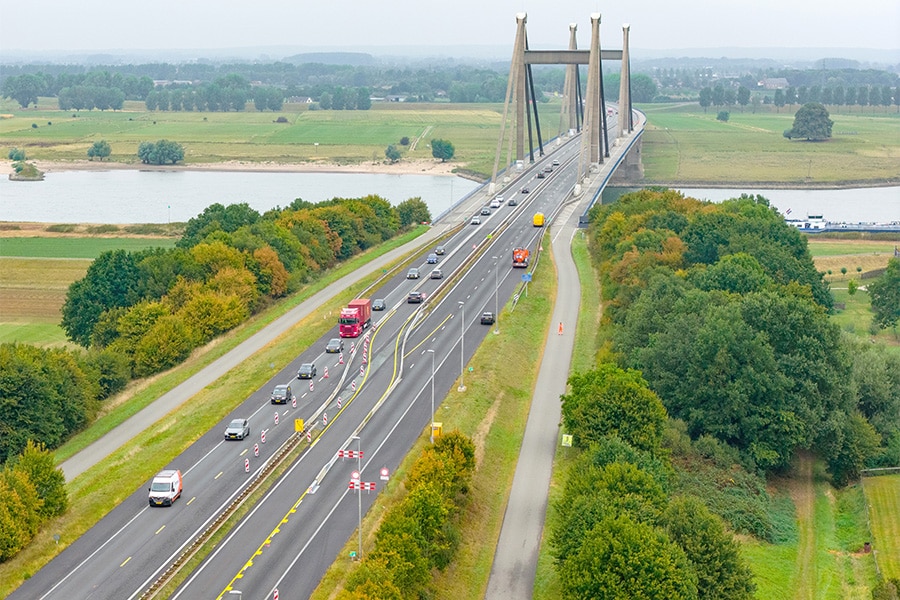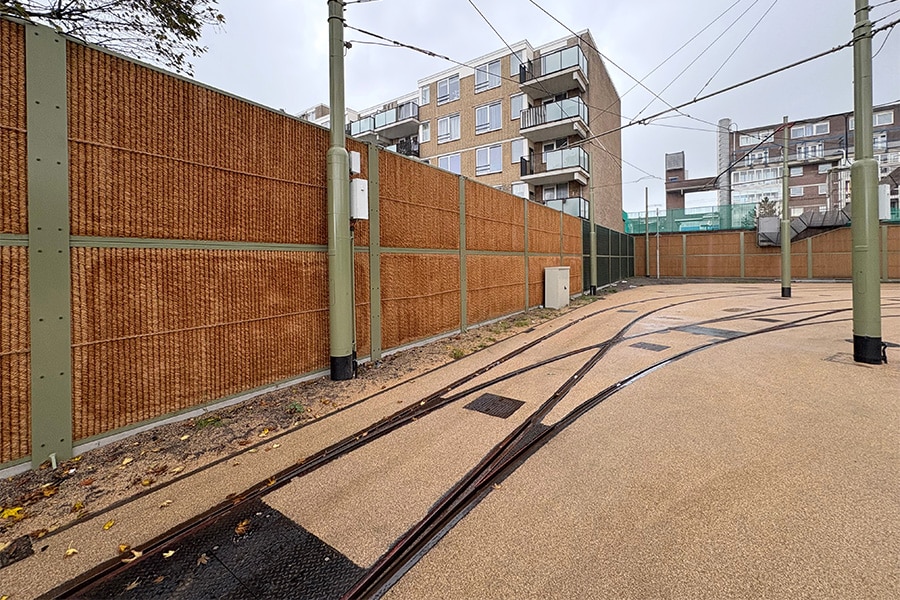
BUKO secures accessibility and safety during maintenance Prince william Alexander Bridge (N323)
The Prince Willem-Alexander Bridge on the N323 between Echteld and Beneden-Leeuwen is the only concrete cable-stayed bridge in the Netherlands. Major maintenance will be carried out in several phases in the period between 2025 and 2029. After renewing the asphalt in 2024, replacement of the joint crossings followed in 2025 as part of the GO task. These are at the end of their service life after more than 50 years. On behalf of contractor Maurer, BUKO provided the temporary traffic measures.
Extensive preparations
According to project coordinator Matthijs Spies, the project required lengthy preparation. “In coordination with province, contractor and Rijkswaterstaat, calculations were made to ensure traffic flow and safety,” he says. BUKO Bereikbaar was also involved from the beginning for communication with the surrounding area and road users.

Operational approach
Replacing the joint crossings meant major work on a busy thoroughfare. “We couldn't close the bridge completely,” Spies said. “That's why a 2-0 system was chosen, with traffic being directed in two directions over one lane. Almost 3 kilometers of barrier separated the traffic flows.”
The measure required three weekend closures: one for construction, one for converting traffic flow and one for completion and additional maintenance, such as replacing a joint above the railroad viaduct. “The first weekend we even finished ahead of schedule,” Spies says.
BUKO took care of all temporary traffic measures: barriers, markings, lighting and the removal of guide rails. “We always work with reliable partners on this,” says Spies. “Good coordination is crucial to get everything done safely and on time.” Camera masts from BUKO Waakt made it possible for county and emergency services to watch live and intervene immediately.
Digital clout
Digitalization also played a key role. Project manager Matthijs Beelen: “With BUKO Bereikbaar, we researched beforehand who uses the bridge and where they come from.” Based on those insights, BUKO set up a digital campaign. “Via social media and push notifications, road users were proactively informed. Digital beacons on the bridge gave Flitsmeister voice messages to inform motorists in time about the planned closures. We also monitor all traffic flows around the detour,” says Beelen. “This allows the province and road authority to plan even more specifically in the future.”
Collaboration and pilot function
The project serves as a dress rehearsal for major maintenance in 2026 and 2027. “We really see this as a pilot, giving us an even better idea of what works and what can be sharpened,” says Spies.
Both are proud of the collaboration and the preparation that is proving itself in practice. “Everyone knew their role and was willing to think along,” Spies said. Beelen adds: “The long preparation pays off in how traffic acts and reacts. Everything is neatly monitored, proof that the plan was well thought out.”
This project shows BUKO's strength: completely unburdening clients, switching quickly and securing accessibility with physical and digital services. “It is great to hear clients say: it is running super and everything is taken care of down to the last detail,” concludes Beelen.




